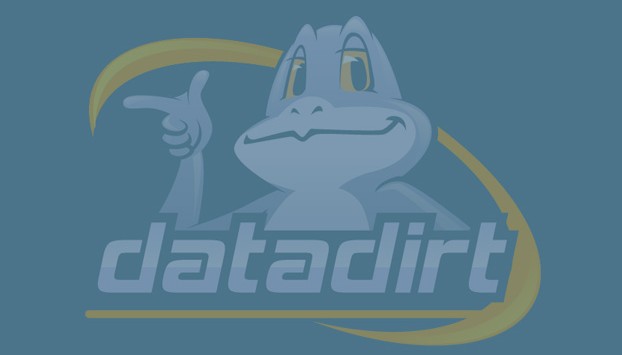How to turn WordPress into a Social Network Site
WordPress offers a fascinatingly wide range of options: thanks to the power and the creativity of the open source community, the world's most popular CMS has developed from a “blog-only” product into a multifaceted platform. Hundreds of plugins are waiting to cater almost every web publisher's needs. These days, two new plugins take WordPress to the next level by integrated elaborate social network features. BuddyPress is now available at version 1.2 which plays along well with standard WP-installations; the previous version required WP multiuser edition. And then there's Mingle, a new brilliant extension by Blair Williams, author of the (genius!) PrettyLink plugin.
Even though both plugins offer similar functionalities, they take a completely different approach at turning WordPress into a social network. While BuddyPress aims at running a stand-alone social network site, Mingle extends the community capabilities of nay existing blog. I installed it here on datadirt yesterday. Curious for a test-drive? Just click the new link Profile in the main menu! In the following posting I'll explain why extending a blog with social network features is generally a smart idea.
Why bother with registered users?
This questions indeed comes to mind: on the one hand, standard blog-usage scenarios (i.e. reading plus commenting) don't require any kind of registration, on the other hand the advantage of an extra user profile might not be obvious immediately. To clarify this, let me begin with a little “social network theory” by answering the question: What are social networks made of? The following elements form the core of any social site:
- User management (including registration, either direct or via 3rd party authentication)
- User profiles (minimal version: avatar picture, info-text, homepage URL)
- Friends/relations management: including friendship requests, notifications etc.
- Status-updates: the main user interaction tool, aggregated on an “activity stream” overview page.
- Privacy settings: users can chose if their profiles/status updates are visible to friends only or the public.
Any extra feature – newsletters, photo galleries, add-on applications, video-uploads and so on – are just the icing on the cake. The main success cause for any social network is not feature-richness but economies of scale: if a sufficient number of people is actively using the network, the tools start making sense.
Don't get me wrong here: I'm not talking large numbers. Facebook is interesting to people because it has become extremely widespread as a “general interest network”. But there are plenty specialized networks which don't require huge quantities of users. Any group of people connected by the same project or the same interest will love these tools.
Take a closer look at the list above: doesn't it remind you of the “good old” bulletin board ear? Indeed: phpBB and other discussion boards are not so different from today's social networks. Status updates have replaced threads, and realtime has replaced the archive metaphor. (BuddyPress even includes a “traditional” discussion board.)
In his well-knows essay Seth Godin explains micro-communities which he refers to as Tribes:
A tribe is any group of people, large or small, who are connected to one another, a leader, and an idea. For millions of years, humans have been seeking out tribes, be they religious, ethnic, economic, political, or even musical (think of the Deadheads). It's our nature.
Now the Internet has eliminated the barriers of geography, cost, and time. All those blogs and social networking sites are helping existing tribes get bigger. But more important, they?re enabling countless new tribes to be born?groups of ten or ten thousand or ten million who care about their iPhones, or a political campaign, or a new way to fight global warming
In my opinion, user profiles for registered readers are the perfect tribe-tool for bloggers: the most valuable asset of any blog is the community, the house guests, the regular readers. If you run a niche-blog and have already drawn the attention of various experts to your site, expanding your blog with social network features does make a lot of sense.
datadirt goes social network
This year I added a couple of new social media features to datadirt: users can either register directly of authenticate via their Facebook, Twitter or MySpace Accounts. They can upload their own user pic (instead of the standard Gravatar), but until now, only guest authors had profile pages. Now that Mingle is in full effect, the “socialification” of datadirt is complete.
All current users now automatically have a profile page – if you've read this blog as a guest, I invite you to test-drive the new features! You can chose of your profile page is public or only visible to friends, you can add a homepage link and a description plus you might find some like-minded friends. So just give it a try: registering takes less than 30 seconds:
register your datadirt account
Some technical details: BuddyPress or Mingle?
BuddyPress: Social Network in-a-box
BuddyPress is a full-service-solution and it lives up to its claim:
Build a social network for your company, school, sports team or niche community all based on the power and flexibility of WordPress.
First you need to install a “naked” WordPress, then you activate the BuddyPress plugin which includes a social-networking optimized template. More themes will follow soon, and the included one can easily be modified. BuddyPress includes a quite elaborate “activity stream”, group management, private messaging, friend management, user blogging features, profile pages and a discussion board – it's definitely all-in-one. There are even a few plugins available which add new features.
The developers set up a demo page, plus there are some live communities running BP – just take a look here. The advantages of te plugin are obvious: if you're planning on starting a private or niche social network, this is the perfect solution. If you're used to installing WordPress, the setup will take you about 5 minutes, including the ftp upload. But there's also a catch: if you already run a blog, it can be hard to integrate BuddyPress smoothly into your existing theme.
Mingle – the add-on solution
I decided to go with Mingle here on datadirt, because Blair's plugin offers less features, but the integration is a breeze. Mingle lacks groups, private messaging and a bulletin board. Basically, it implements nice user profile pages with status updates and comment function, a friendship manager, some widgets and e-mail notifications. Blair set up an example site at wpmingle.com/. And you can always register and account on this blog.
Blair recommends the popular and flexible Thesis-theme. But because of the way Mingle works it plays along nicely with almost any template out there. After the activation the plugin requires 8 news WordPress pages (profile, friendship manager etc). Mingle uses these pages to display the content. It's probably a good idea to set up a dedicated page template for your community area including a dedicated sidebar!
Mingle also offers additional fields during registration; these are optional and can also be edited later. Obviously, the plugin does not add some parallel structure but it uses the standard WordPress registration and adds some database fields – this is why Mingle works seamlessly with existing plugins. The plugin uses a unique CSS class, so designers can easily change the look via CSS. But even without any modifications, the results looks really nice.
In combination with Gigya's authentication service, Mingle is a great solution for increasing the “stickiness” of each niche blog. I'm a fan and if you want to do me a big favor, please register and give me some feedback! Thanks :mrgreen:
BuddyPress.org
WordPress Mingle




Very nice writeup! Thanks for the detailed analysis.
I should also point out that you can use any existing WordPress theme with BuddyPress really easily. There is a plugin that you can install that will run you through the process step-by-step: http://wordpress.org/extend/plugins/bp-template-pack/
You’re welcome! Also to register of course :frog6:
Glad you liked the posting!
Transl. by dd
Hi Ritchie,
registering doesn’t seem to work. I got a subscription for the newsletter which I didn’t want to subscribe; or did I get anything wrong?
Hi Ritchie,
die Anmeldung bei Dir klappt leider ned. Ich bekomme eine Best?tigung, dass ich mich zum Newsletter angemeldet habe. Aber das wollte ich ja nicht. Oder habe ich da was falsch verstanden?
Greets
Achim
Hi Achim, this is a feature, not a bug :-) There’s an extra checkbox for the newsletter; seems you didn’t get the confirmation message though as I was tweaking the blog; you probably reached the “old” register page.
On the new one, you chose the password yourself and the account instantly works without any need for activating your account; not even a capture, anti-spam magic working it’s way in the background.
This is the all-new registration page:
http://datadirt.eu/profile/user-registration/
(still have to do the translation though, working on it)
Uff… did it! The new reg-page is now available in English; and you got mail :frog2:
Uups, had to be in english, but I’m sure, you got it ;)
np, I added a translation for the other readers
The only current problem with Mingle is spam – there is no control over it at the moment once this is sorted it will be great
True! I get a lot of spam registrations… I think a captcha on the registration page would definitely be a good idea.
As far as I know Mingle has lately added captcha on the registration page so the spam problem should get a lot better.
Yup, that’s definitely a feature I’ve been waiting for! Works like a charm, too.